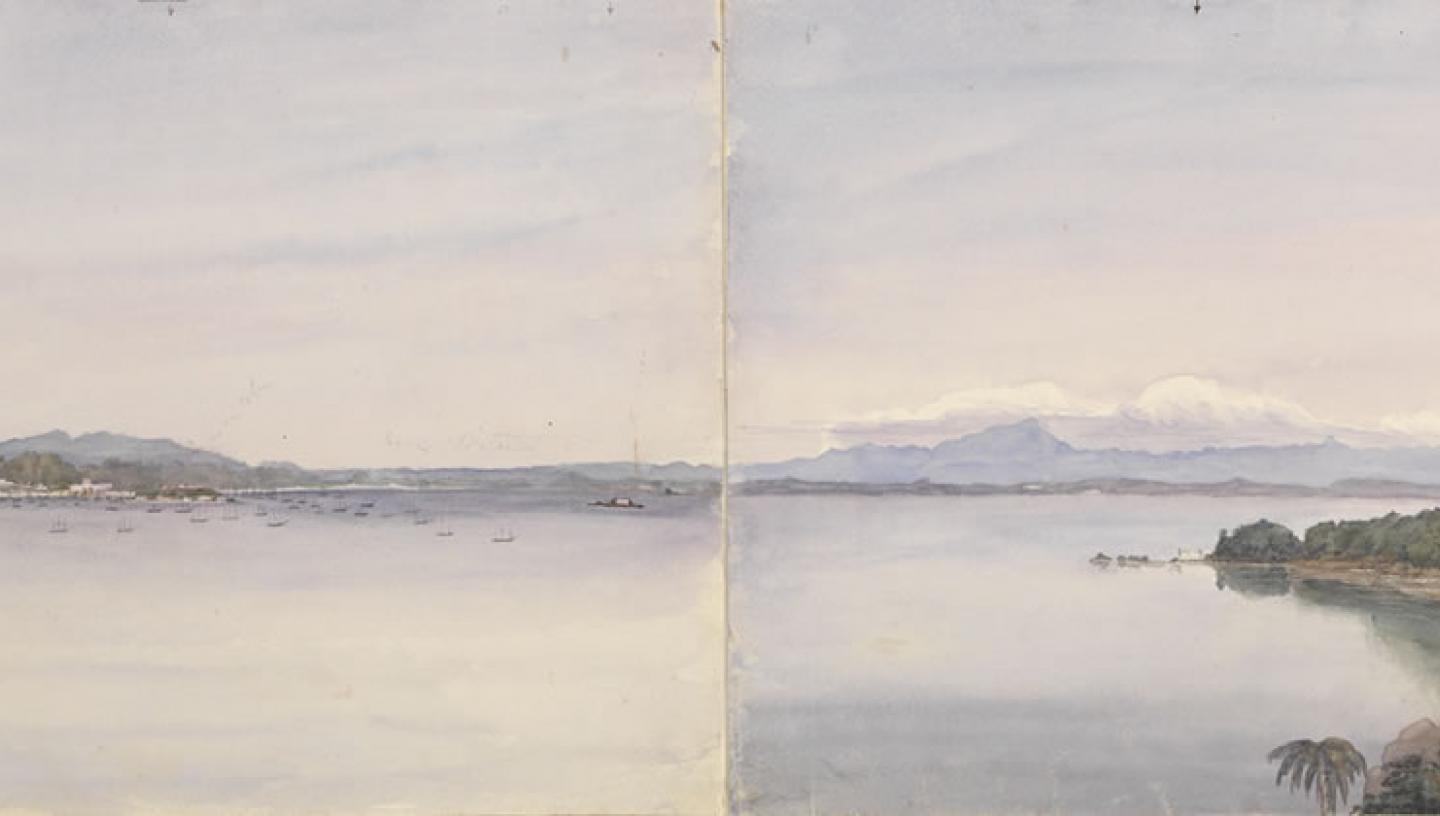
Essential Information
| Location |
National Maritime Museum
|
|---|---|
15 Aug 2016
Need a little help getting the hang of Rio's layout? Pieter van der Merwe comes to the rescue with a beautiful 19th-century panorama and chart of the area.
In case you haven’t quite grasped the geography of Rio de Janeiro before the Olympic medal-fest is over, here’s a guide from simpler times – the early months of 1849. It’s one of the many splendid souvenir watercolours by which Admiral Sir Edward Gennys Fanshawe (1814-1906) recorded places he saw during his long naval career, in this case while outward bound as a fairly junior captain to the Pacific in the 18-gun sloop ‘Daphne’ (of which the Museum also has the figurehead).
View Fanshawe's Panorama of Rio de Janeiro on our Collections website
Fanshawe was at Rio from 27 January to 7 February 1849, from where he wrote to his wife that 'the neighbourhood [was]...too beautiful not to be enjoyable, but the weather was very hot and the town terribly odoriferous'. He made this spectacular panoramic drawing – over a metre wide – from near Fort of Nossa Senhora de Boa Viagem (Our Lady of the Good Voyage), opposite the city on the north side of Guanabara Bay, where the Olympic sailing has been taking place this year – despite ‘odoriferous’ modern pollution also now a problem there.
Rio has one of the largest and most dramatic natural harbours in the world
Rio has one of the largest and most dramatic natural harbours in the world and the view here sweeps round from the south-east at far left to north-north-east at far right. The entrance from the sea and the Sugarloaf mountain are on the left and the ship anchored at centre in mid-bay in front of the city is the ‘Daphne’. Each sheet of the drawing corresponds to one of four sectors marked on a sketch chart of the bay which Fanshawe also made to accompany it, probably for his own interest although naval officers routinely sketched foreign harbours for professional purposes, albeit often surreptitiously given that local authorities frequently regarded it as spying. The chart is also among the drawings by him in the Museum, and clearly shows his viewpoint, greater detail of the bay and the names of various points around it.
View Fanshawe's Chart of Rio de Janeiro on our Collections website
Pieter van der Merwe is General Editor and Greenwich Curator at Royal Museums Greenwich.